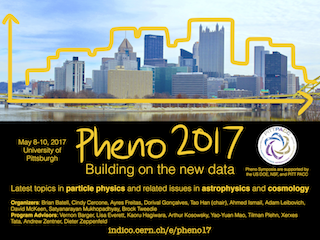Speaker
Description
Axion stars are condensed states of large numbers of axion particles, bound by self-gravitation and quantum self-interactions. The mass of weakly bound axion stars is limited by gravitational stability, with condensates exceeding the maximum mass subject to collapse. During the collapse process, the axion density increases and higher-order self-interactions become increasingly relevant. By taking these terms into account, we provide evidence that in spite of a leading attractive interaction, collapsing axion stars stabilize in a dense state which is larger than its Schwarzschild radius, and so do not form black holes. During the last moments of collapse, number changing processes take place with a very large rate, processes in which individual relativistic axions are emitted from the axion star which escape from galaxies and galaxy clusters. Finally, if axion stars are a significant fraction of cold dark matter, then frequent collisions with each other or with ordinary stars could catalyze this collapse process as well.
